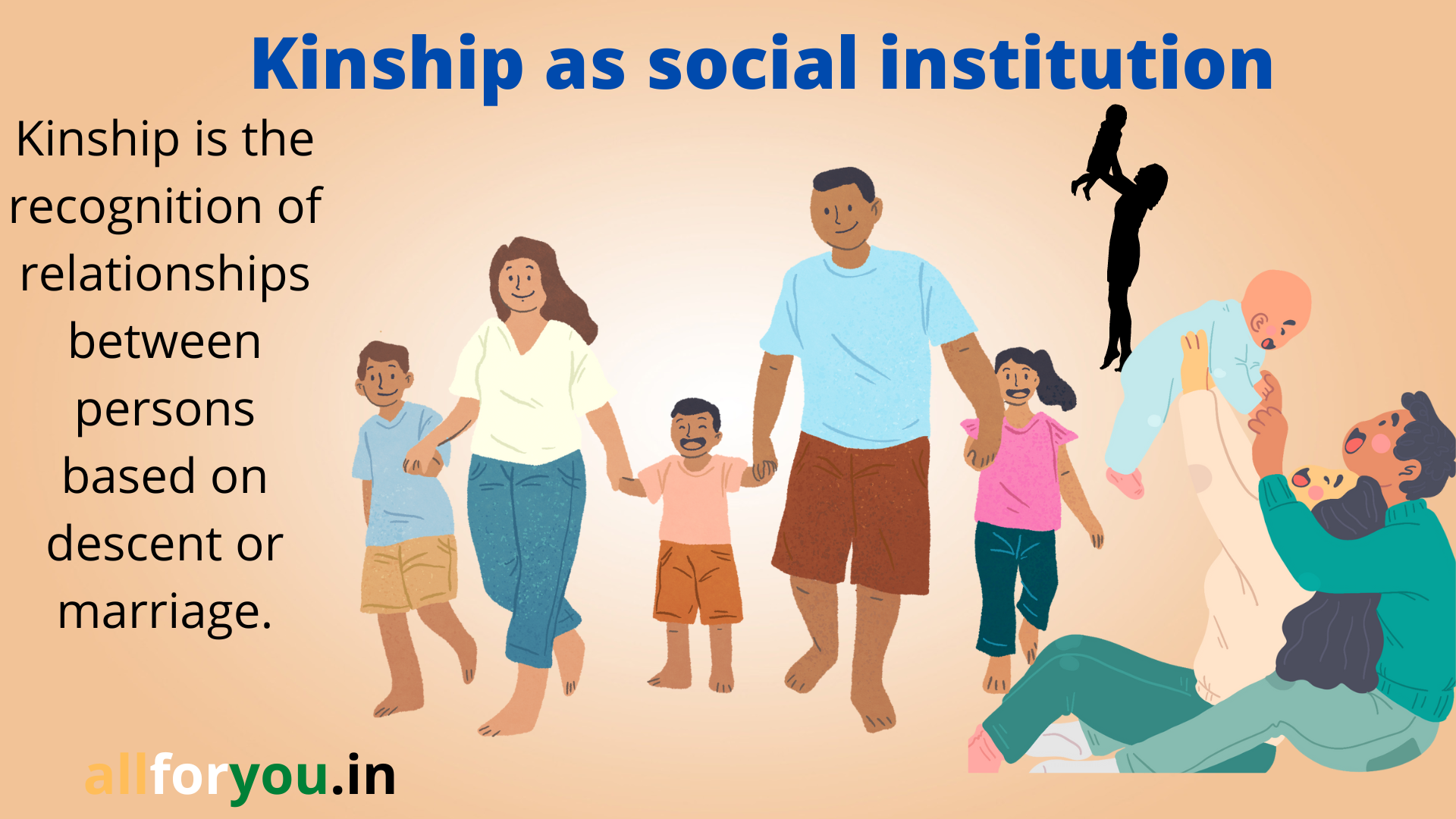
Kinship As Social Institution
Kinship is a vital social institution that is found in human societies across the globe. It is one of the most important organizing components of society, along with family and marriage. Kinship systems bind individuals and groups together and establish relationships between them. Relationships are formed in human society in two ways: marriage and procreation (consanguinity).

How become relatives or kinship
When we consider all our relatives and categorize them based on whether they are related by marriage or blood, we can understand how kinship systems are formed.
Kinship refers to a set of relationships and relatives based on blood relationships (consanguineal) or marriage (affinal).
Definitions
According to Abercrombie et al, “The social relationships deriving from blood ties (real and supposed) and marriage are collectively referred to as kinship.”
Similarly, L. Stone describes ” Kinship is the recognition of relationships between persons based on descent or marriage. If the relationship between one person and another is considered by them to involve descent, the two are consanguine (“blood”) relatives. If the relationship has been established through marriage, it is affinal
There are two main types of kinship in society:
1) Blood relatives (consanguineal) and
2) Relatives formed by marriage (affinal).
Blood relatives refer to relationships based on blood, such as the relationships between parents and children or siblings, which are the most basic and universal kin relations. In contrast, relatives formed by marriage refer to relationships formed based on marriage, such as the relationship between a husband and wife.
Base on Degree Of Kinship’s There Is Three Types
Kinship relationships can be categorized into three types based on how close or distant the relative is.
1) Primary kinship
Primary kinship includes parents and siblings, as these are the closest blood relations whereas
2) Secondary kinship
Secondary kinship includes relatives such as aunts, uncles, and cousins, who are not as close as primary relatives
3) Tertiary kinship
Tertiary kinship includes more distant relatives, such as great-aunts or great-uncles, who are not as close as secondary kin.
In short, kinship is a crucial social institution that binds individuals and groups together and establishes relationships between them. Understanding the different types of kinship and how they are formed can help us appreciate the importance of this institution in human society.
In Marathi Please click on next link:- नातेसंबध व्यवस्था | Kinship As Social Institution
